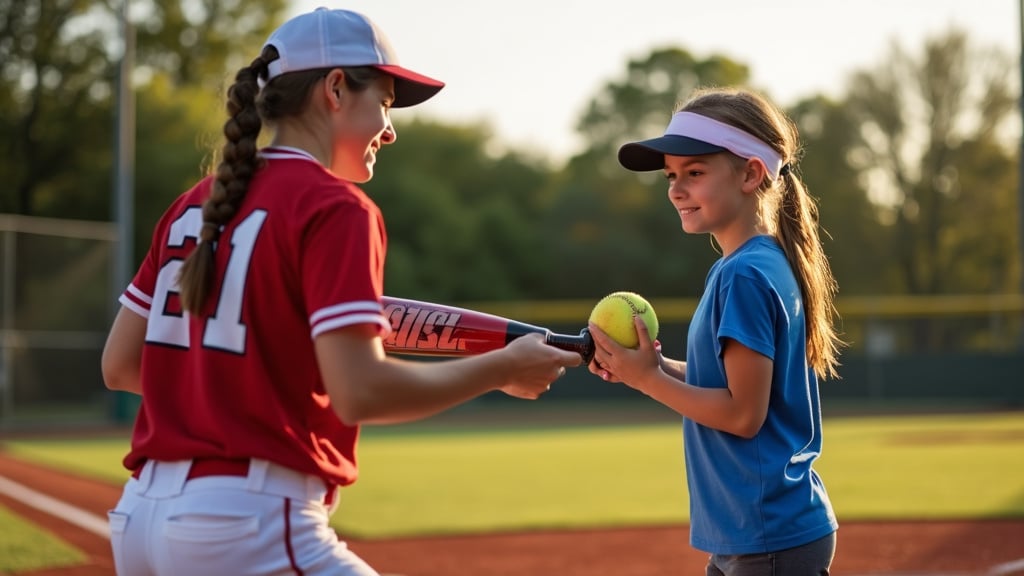Self-Assessment in Developing NIL Strategy: Key Steps and Best Practices
Success in navigating Name, Image, and Likeness (NIL) deals often starts with a deep dive into self-assessment.
Student-athletes need to understand their unique strengths and personal brand before approaching potential opportunities.
This clarity helps them align with brands that resonate with their values and can set them on a path for more meaningful collaborations.

By engaging in a thoughtful self-assessment, athletes can identify specific goals and target the right audience.
This process involves reflecting on what makes them stand out, which can range from athletic prowess to social media presence.
Knowing these aspects can help athletes craft a strategic NIL plan that plays to their strengths and appeals to potential partners.
A well-crafted NIL strategy can pave the way for long-term success.
It’s not just about sealing deals but creating partnerships that grow.
Focusing on these elements ensures that athletes not only capitalize on their immediate opportunities but also build lasting relationships that evolve alongside their careers.
Understanding NIL Strategy and Its Importance
Table of Contents
- 1 Understanding NIL Strategy and Its Importance
- 2 Identifying Your Unique Strengths
- 3 Recognizing and Addressing Weaknesses
- 4 Defining Your Core Values
- 5 Tools and Methods for Effective Self-Assessment
- 6 Creating a Personalized NIL Strategy
- 7 Implementing and Monitoring Your NIL Strategy
- 8 Resources and Support Systems
- 9 Frequently Asked Questions
- 9.1 How can athletes effectively market themselves for NIL deals?
- 9.2 What are the essential components to consider when negotiating NIL deals?
- 9.3 Which strategies are most effective for self-assessment in a NIL business?
- 9.4 What are some innovative business ideas that align with NIL opportunities?
- 9.5 What three key factors should be included in any NIL agreement?
- 9.6 How does one start a NIL-focused company and attract athlete partnerships?

Developing a strategy for Name, Image, and Likeness (NIL) rights is crucial for athletes looking to maximize their earning potential.
Achieving this involves understanding NIL rights, the importance of self-assessment, and aligning NIL opportunities with personal and athletic goals.
Overview of NIL Rights
NIL rights allow college athletes to profit from their name, image, and likeness.
This development emerged after the NCAA implemented an interim policy change, enabling athletes to receive compensation for their branding efforts.
This could mean endorsing products, hosting camps, or monetizing social media channels.
Athletes must comprehend the NCAA regulations governing NIL activities.
Knowing these rules can help them avoid penalties and optimize their opportunities.
For many, this opens new financial streams that were previously unavailable.
Book Your Dream Vacation Today
Flights | Hotels | Vacation Rentals | Rental Cars | Experiences
Why Self-Assessment Matters in NIL Strategy
Self-assessment is essential for developing a robust NIL strategy.
Knowing personal strengths, weaknesses, and marketable skills can guide athletes in creating effective brand identities.
Understanding oneself can lead to better decision-making regarding partnerships and endorsements.
Identify goals and objectives early.
Doing so helps in crafting a strategy that aligns with personal values and career aspirations.
This intentional approach minimizes the risks of endorsements that do not fit well with the athlete’s image.
Aligning NIL with Personal and Athletic Goals
To successfully leverage NIL rights, athletes should align their deals with both personal and athletic goals.
An athlete’s brand should reflect both their sporting prowess and personal interests.
This alignment fosters authentic connections with their audience.
For example, if an athlete excels academically and athletically, they could partner with educational brands or sports equipment companies.
This not only enhances their public persona but also creates a cohesive brand image.
Identifying Your Unique Strengths

Identifying unique strengths involves evaluating athletic skills, personal talents, interests, and academic achievements.
Assessing Athletic Skills and Achievements
Athletic skills play a crucial role in forming an effective NIL strategy.
Athletes must evaluate their performance metrics, like speed, strength, and agility.
Identifying standout performances in games or competitions helps highlight these skills.
Reviewing past achievements, such as awards or records, can provide concrete examples of abilities.
Using videos, stats, and feedback from coaches can help in this assessment.
Self-assessment tools and metacognition are vital in understanding one’s athletic capabilities and setting realistic goals.
Recognizing Personal Talents and Interests
Personal talents and interests can differentiate athletes in the NIL market.
These include skills outside the athletic domain, like public speaking, writing, or artistic abilities.
Exploring hobbies or side projects can uncover these unique qualities.
Engaging in activities that spark genuine interest can elevate personal branding.
Sharing these interests through social media or interviews can attract a broader audience and sponsors.
This approach helps build a well-rounded image.
Leveraging Academic and Extracurricular Accomplishments
Academic performance is another cornerstone of NIL strategy.
Grades, awards, and involvement in clubs or organizations showcase commitment to excellence beyond sports.
Highlighting achievements in STEM, arts, or leadership programs adds depth to an athlete’s profile.
Participating in extracurricular activities enhances critical thinking and self-efficacy beliefs.
These experiences contribute to personal growth, making athletes more appealing to sponsors.
Building a strong academic and extracurricular narrative supports a diversified NIL strategy.
Recognizing and Addressing Weaknesses
Identifying and managing weaknesses in NIL (Name, Image, Likeness) strategies is crucial for growth.
This process includes self-evaluation, practical techniques, and actionable steps for improvement.
Common Weaknesses in NIL Strategies
In NIL strategies, several weaknesses are frequently encountered.
Poor time management often hampers consistent communication with fans and brands.
Overemphasis on short-term gains can neglect long-term relationships and brand building.
Limited social media skills can restrict reach and engagement.
These weaknesses can hinder effectiveness and growth if not addressed.
Recognizing these issues early allows for timely strategies to mitigate them.
Self-regulated learners can optimize their approaches by identifying specific areas needing improvement.
Self-Reflection Techniques
Effective self-reflection is key to identifying NIL strategy weaknesses.
Journaling daily activities and outcomes provides a clear view of patterns and habits.
Regular feedback from coaches, peers, and mentors offers external perspectives.
Online self-assessment tools can help gauge performance and areas of improvement.
Reflective practice aligns actions with goals, enabling accurate self-assessment and gradual improvement.
Using formative assessment methods fosters continuous learning, helping refine NIL strategies over time.
Steps to Improve and Mitigate Weaknesses
To address weaknesses, setting clear, achievable goals is essential.
Developing a structured schedule improves time management.
Engaging in professional development enhances social media skills.
Building long-term relationships with brands through consistent and genuine communication strengthens NIL efforts.
Seeking regular feedback and acting on it promotes self-regulated learning.
Adopting self-regulated learning strategies ensures continuous progress and adaptation.
Defining Your Core Values
Defining your core values is essential for building an effective NIL strategy.
It helps align opportunities with personal beliefs and professional goals, ensuring that decisions resonate with what matters most.
Importance of Values in NIL Strategy
Core values play a crucial role in shaping a Name, Image, and Likeness (NIL) strategy.
They inform decisions and guide actions, keeping athletes true to themselves.
Values such as integrity, responsibility, and independence help create authentic connections between athletes and their audiences.
When athletes maintain authenticity, they build trust, which in turn enhances their marketability.
Furthermore, core values anchor athletes in their personal and professional journeys, providing a stable foundation for navigating the complexities of NIL deals.
Identifying Personal and Professional Values
Identifying one’s core values requires reflection. Athletes can start by considering what truly matters in both their personal and professional lives.
A helpful approach is to create a list of top values, such as honesty, respect, and commitment. Ranking these values can further clarify priorities.
Engaging in self-assessment exercises can reveal values that are vital.
For example, answering questions about past experiences and role models can uncover underlying beliefs and attitudes fundamental to one’s identity.
Aligning NIL Opportunities with Your Values
Aligning NIL opportunities with core values ensures that athletes remain consistent and authentic in their brand representation.
When evaluating potential NIL deals, athletes should ask themselves whether the opportunity aligns with their identified values.
For instance, if sustainability is a core value, partnering with eco-friendly brands would be a natural fit.
This alignment not only keeps athletes grounded but also ensures that their audience perceives their actions as genuine, leading to stronger, more fruitful partnerships.
Tools and Methods for Effective Self-Assessment
Effective self-assessment can significantly enhance NIL (Name, Image, and Likeness) strategy by enabling athletes to identify strengths, weaknesses, and opportunities.
Employing various tools and methods ensures that the assessment is comprehensive and reliable.
Self-Assessment Surveys and Questionnaires
Self-assessment surveys are essential tools for athletes aiming to gauge their personal and professional skills.
These surveys typically include well-structured rubrics and scales that measure performance in specific areas relevant to NIL, such as social media presence, public speaking, and networking capabilities.
Reliable questionnaires often incorporate elements from meta-analysis studies to ensure accuracy and validity.
They help athletes reflect on their achievements, identify gaps, and create actionable plans.
In addition, these tools utilize Student perceptions to offer insights into what areas might need focused improvement, making them indispensable for a robust NIL strategy.
SWOT Analysis for Personal Branding
A SWOT (Strengths, Weaknesses, Opportunities, Threats) analysis is a practical method for athletes to evaluate their branding potential.
By listing their strengths and aligning them with NIL opportunities, athletes can maximize their marketability.
Weaknesses and threats, on the other hand, highlight areas needing attention.
A well-conducted SWOT analysis offers a clear roadmap for personal branding, enabling athletes to better position themselves in competitive markets.
This technique aligns their self-perception with external market demands, effectively lighting the path toward a more influential personal brand.
Seeking Feedback from Coaches, Teammates, and Mentors
Incorporating feedback from trusted individuals like coaches, teammates, and mentors is another crucial aspect of self-assessment.
These stakeholders offer unique perspectives that an athlete might overlook.
Feedback helps athletes understand how they are perceived by others, which is vital for developing a nuanced NIL strategy.
Regularly seeking input from these sources ensures that the assessment remains dynamic and includes diverse viewpoints.
It provides a broader understanding of both personal and market trends, significantly enhancing the reliability of the self-assessment process.
This ongoing dialogue encourages continuous improvement and aligns personal goals with external expectations.
Creating a Personalized NIL Strategy
A personalized NIL strategy involves setting clear goals, leveraging personal strengths, and learning from successful athletes who have used self-assessment effectively to navigate their own deals.
Setting Clear and Achievable Goals
Setting goals begins with defining what the athlete wants to achieve through their NIL activities.
Goals should be specific, measurable, attainable, relevant, and time-bound (SMART).
Specific: Define the precise outcome you want.
For example, aiming to secure three brand partnerships in a year.
Measurable: Establish criteria for measuring progress, like tracking social media engagement or income from partnerships.
Attainable: Set goals that are realistic.
For instance, a local endorsement might be more feasible initially than a national campaign.
By following the SMART criteria, athletes can track progress and adjust strategies as needed.
Building a Strategy Based on Strengths, Mitigating Weaknesses, and Upholding Values
Identifying one’s strengths and weaknesses is crucial.
An athlete strong in public speaking might focus on live events and interviews.
Conversely, someone less comfortable in front of the camera might lean on social media or written content.
Strengths: Use strengths to create engaging and authentic content.
Highlight unique skills and personality traits that resonate with fans.
Weaknesses: Recognize areas needing improvement.
If struggling with social media, consider training or hiring a social media manager.
Values: Ensure all NIL deals align with personal values.
Aligning with brands that share similar values creates trust and long-term engagement with the audience.
Evaluating and leveraging these elements can create a robust and authentic NIL strategy.
Case Studies of Successful Athletes Using Self-Assessment
Several athletes have effectively used self-assessment to guide their NIL strategies.
One example is a college football quarterback who partnered with a local car dealership.
Recognizing his local following, he chose a brand connected to his community.
Another example is a college gymnast who created a YouTube channel focused on workout routines and healthy living.
By assessing her interest in fitness and media, she developed a strategy that showcased her expertise and attracted fitness-related partnerships.
These case studies highlight how personalized strategies can lead to unique and successful NIL opportunities.
Implementing and Monitoring Your NIL Strategy
To successfully implement and track a Name, Image, and Likeness (NIL) strategy, athletes need to follow actionable steps for strategy implementation, continuously track their progress, and engage in self-assessment to refine their approach.
Actionable Steps for Strategy Implementation
Implementing an NIL strategy begins with setting clear, achievable goals.
Athletes should outline what they aim to accomplish, such as increasing social media followers or securing sponsorship deals.
With goals in place, the next step is to develop a tailored approach to reach them.
This might involve collaborating with local businesses or creating engaging content for social media.
A critical part of implementation is selecting the right platforms.
Athletes need to know where their audience spends time and focus their efforts there.
They should also be ready with a content calendar to ensure regular and consistent postings.
Once everything is in motion, athletes should seek feedback from mentors, coaches, and peers.
This helps to ensure they are on the right track and make adjustments as needed.
Implementing a successful NIL strategy is not a one-size-fits-all process; it requires continuous attention and adaptation.
Tracking Progress and Adjustments
Measuring success involves self-monitoring through various mechanisms.
Athletes can use analytics tools provided by social media platforms to track engagement rates, follower growth, and the performance of their posts.
For more detailed insights, they might consider third-party analytics software that offers comprehensive data analysis.
Tracking is not just about numbers; it’s also about understanding how different types of content perform and resonate with the audience.
If a particular type of post receives more engagement, it makes sense to produce more of that.
Adjustments are crucial to maintaining momentum.
Athletes need to be flexible, prepared to pivot strategies based on what the data reveals.
Regularly reviewing metrics and being willing to experiment with new content or partnerships can help in staying relevant and effective.
Continual Self-Assessment and Strategy Refinement
Self-assessment is essential for long-term success.
Athletes should regularly evaluate their performance, asking questions like, “Are my goals still relevant?” and “What can I improve?”
This reflective practice helps to identify strengths and areas that need work.
A key aspect of self-assessment is learning from failures and successes alike.
Athletes should analyze what worked well and why, as well as what didn’t and how to improve.
This is where self-regulated learning becomes valuable; being able to adapt and learn from the process ensures sustainable growth.
Strategy refinement involves tweaking goals, approaches, and techniques based on insights gained from self-assessment.
It’s a continuous loop of action, evaluation, and adjustment.
By staying proactive and receptive to change, athletes can keep their NIL strategy dynamic and impactful.
Resources and Support Systems
There are numerous resources and support systems available to college athletes navigating the NIL landscape. These include specific tools for personal branding, access to NIL consultations and workshops, and networking opportunities.
Tools and Platforms for Personal Branding
Athletes can leverage various tools and platforms to build their personal brands.
Social media platforms like Instagram, Twitter, and TikTok allow athletes to engage with fans and attract sponsors.
Using branding tools such as Canva for design, or Hootsuite for social media management can help streamline their marketing efforts.
Many athletes also use websites like Athlete Network to showcase their achievements and career highlights.
Access to NIL Consultations and Workshops
NIL consultations offer personalized guidance for athletes.
Organizations and agencies, such as the Sports Financial Literacy Academy, provide workshops and seminars to help athletes understand NIL rules and develop their strategies.
These consultations often cover legal aspects, financial planning, and marketing strategies.
Educators and industry professionals lead these sessions, offering expert advice tailored to each athlete’s needs.
Networking with Other Female Athletes and Industry Professionals
Networking is crucial for expanding opportunities in the NIL space.
Athletes should connect with other female athletes and industry professionals through events, social media groups, and professional organizations.
Attending industry conferences and participating in webinars are effective ways to meet potential mentors and collaborators.
Networking can provide insights and opportunities that are not available through other means, fostering professional development and diverse perspectives.
Frequently Asked Questions
Athletes looking to maximize their NIL opportunities need to focus on self-marketing, smart negotiation, and effective self-assessment. Innovative business ideas and key components in agreements are also crucial for success in this space.
How can athletes effectively market themselves for NIL deals?
Athletes should prioritize building a strong personal brand.
Social media presence is key. Regularly posting engaging content that resonates with their audience helps.
Collaborating with influencers and other athletes can also boost visibility. Authenticity is vital, as it attracts genuine followers and potential partners.
What are the essential components to consider when negotiating NIL deals?
When negotiating NIL deals, athletes should ensure that terms are clearly defined.
This includes payment structure, duration of the contract, and expectations for deliverables.
It is also important to include clauses that protect their intellectual property and personal brand.
Seeking legal advice can help navigate complex agreements.
Which strategies are most effective for self-assessment in a NIL business?
Athletes should regularly review their personal brand and audience engagement.
Setting specific goals and tracking progress towards them is essential.
Surveys and feedback from followers can provide valuable insights.
Additionally, monitoring competitor strategies and adapting successful tactics can keep their approach fresh and relevant.
What are some innovative business ideas that align with NIL opportunities?
Custom merchandise lines, such as apparel or branded accessories, can be lucrative.
Hosting online training sessions or workshops can leverage their expertise.
Additionally, partnering with local businesses for promotional events provides mutual benefits.
Creative tie-ins, like limited-edition products or exclusive content, can also attract attention.
What three key factors should be included in any NIL agreement?
An effective NIL agreement should include detailed compensation terms, clear deliverable expectations, and intellectual property rights.
Compensation terms outline the financial aspects, including payment schedules.
Deliverable expectations provide clarity on what the athlete needs to produce. Intellectual property rights protect the athlete’s name, image, and likeness throughout the contract.
How does one start a NIL-focused company and attract athlete partnerships?
To start a NIL-focused company, one should first understand the market and legal landscape.
Building a team with expertise in marketing, law, and athletics is crucial.
Networking with athletes and offering competitive, transparent deals can attract initial partnerships.
Showcasing successful case studies can also help build credibility and attract more athletes.

